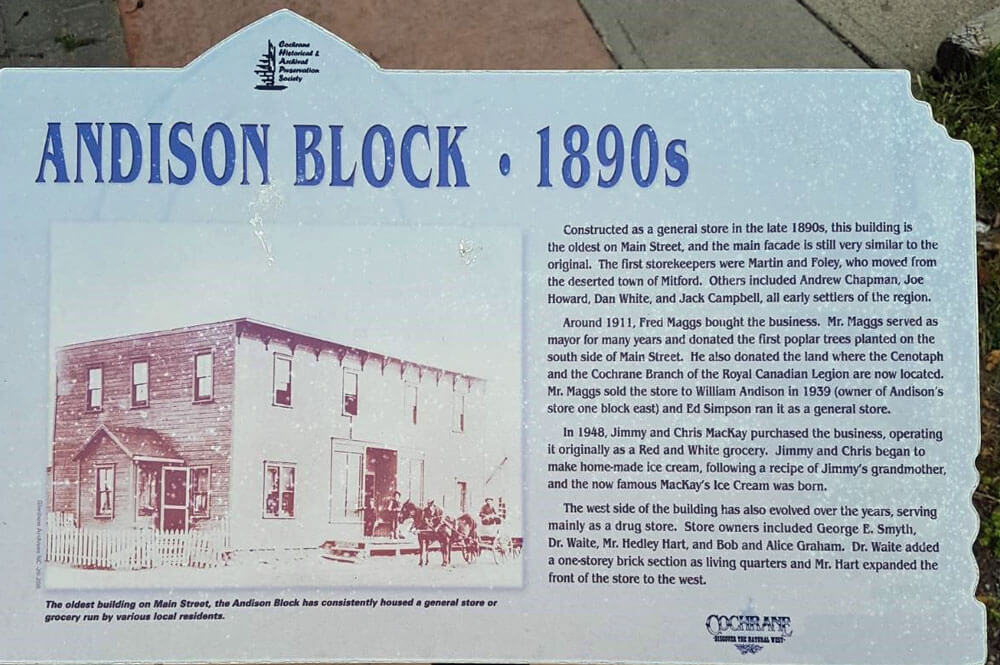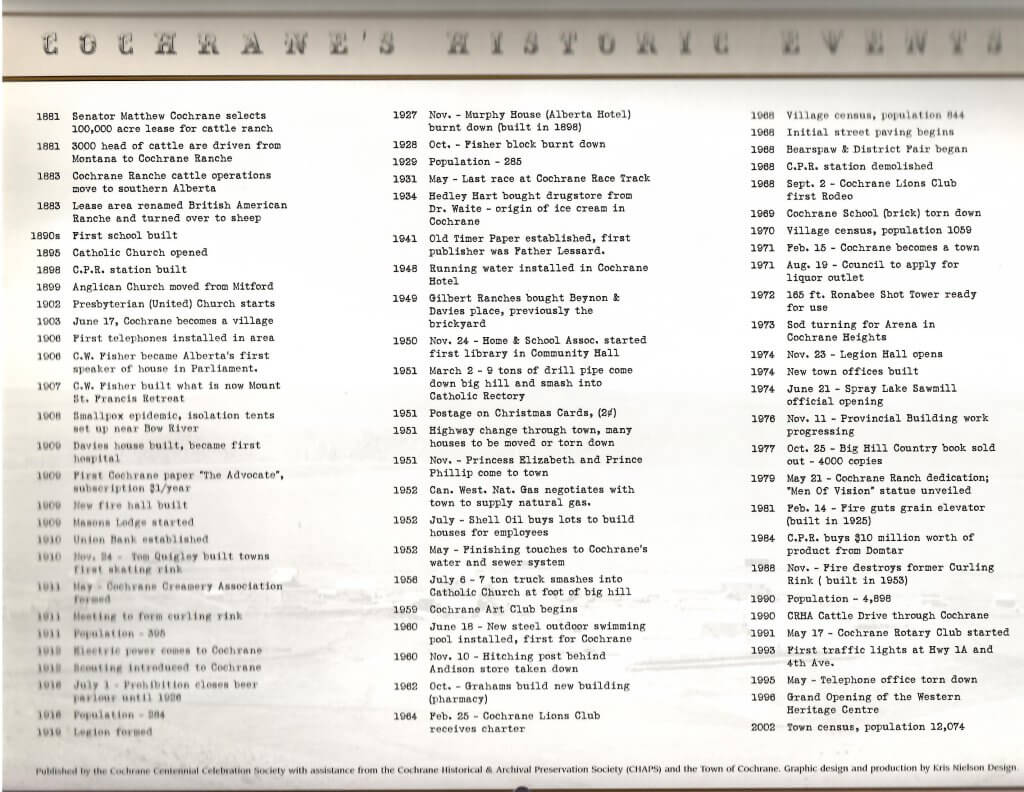from A Peep into the Past by Gordon and Belle Hall Vol. 1 pg 59
In 1895 Cochrane could boast of its first church, built by members of the Roman Catholic faith, to be followed by an Anglican church moved from deserted Mitford in 1899 and the establishment of a Presbyterian Church in 1927. In 1898 Jim and Joe Murphy built a new house known as the Murphy House. It became a famous landmark and stood where Bowridge Motors Garage is. It burned down in 1927.
Then in 1901, C.W. Fisher established Cochrane’s first implement business. The following year a Mrs. R. Smith started a maternity hospital in her house and it was operated for a short time by Dr. Toronto. The same year the first brick kiln was in Cochrane by Pete Collins. An unorganized hamlet until 1903, Cochrane was incorporated that year. Old records show $ 100 was spent on streets in 1904 and at the same time the salary of the overseer was set at $15 per year. The overseer’s salary took a major rise to $25 in 1905 when the village enjoyed a minor boom with the building of a second hotel, a livery stable and the establishment of a medical practice by Dr. A.W. Parks. The year 1908 saw a smallpox epidemic strike, and it was necessary to establish a quarantine camp near the Bow River where patients were housed in tents with wooden floors. Guards had to be hired to keep relatives away and when the epidemic subsided – after 25 residents had been stricken – it took the village two years to pay back the money borrowed to operate the camp.
In 1908 Duncan Shelley opened the Shelly Quarry which supplied the sandstone for some of Calgary’s early buildings and it remained in operation until 1914. In March 1909 Cochrane gained in stature when J. Mewhot started a weekly paper called the Cochrane Advocate. The paper had 16 editors over a span of 14 years before it finally folded. Most of the editors were also the owners and nearly all went bankrupt. The same year the paper was started, the village formed a fire department. Robert Hewett was appointed fire chief, also a village constable at a salary of $5 dollars a year plus fee. Property for a fire hall and council chambers was acquired for $150 and the building for $429.
In 1910 the Union Bank opened a branch in Cochrane. The Royal Bank absorbed the Union Bank in 1925 and continues today. In the same year 1910, Dr. Park became house physician of a small hospital. In 1911 the first garage which could accommodate four cars was built, a creamery association was formed and a small sawmill started. The 1911 census showed a population of 395 and more or less stayed that way until 1941. By 1914 the industrial expansion based on bricks, coal, sandstone and timber had ended and the First World War struck Cochrane a crippling blow when many of its citizens enlisted. It was many years before the village recovered, in fact, not until after the Second World War.



